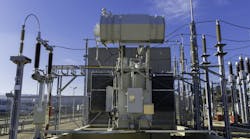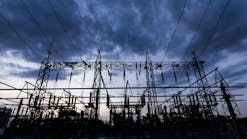“Americans deserve infrastructure they can trust: infrastructure that is resilient to floods, fires, and other climate threats, not fragile in the face of these increasing risks. We need infrastructure that supports healthy, safe communities, rather than locking in the cumulative impacts of polluted air and poisonous water,” according to The Biden Plan to Build a Modern, Sustainable Infrastructure and an Equitable Clean Energy Future
President Biden’s energy plan has recently been shared with the public, and it contains food for thought aplenty. Reading the plan has prompted the following thoughts and to share with you, from the perspective of our work with utilities and transformer manufacturers in the Americas.
Put simply, Biden’s plan to bring clean energy to the forefront of the U.S. energy policy has far-reaching implications for many parts of the power sector.
The plan makes clear something we’ve known for a long time – the need to modernize the nation’s aging energy infrastructure. Biden’s recently released plan details how his administration intends to make the electric grid “smarter, more resilient, and ready to meet the changing needs of a net-zero greenhouse-gas-emissions economy.” My interpretation is that the benefits of clean energy technologies, coupled with long-term cost reductions and deploying existing materials and processes to safely increase the lifespan of infrastructure, are at the forefront of this administration’s priorities.
Building for Tomorrow
Aging infrastructure and increasing urban population levels are both factors influencing Biden’s plan. Here’s an example of just one element of this infrastructure that needs attention - the United States’ fleet of large power transformers (responsible for safely providing the power in the electric grid). These assets average well over 40 years in age, which exceeds the recommended life expectancy of 30 years.
Nobody in the industry wants to “sweat the assets'' to the point that they become unreliable and unsafe, yet that is the predicament facing the current electric grid. It needs to be acknowledged that the US electric grid is a machine, well over one hundred years old, yet still operating with design elements from its earliest years.
Even if all these elements were to be replaced to conform to current standards, there’s more to be done. The new administration is clearly looking to build for a better future as well — future-proofing our energy infrastructure. This includes shoring up existing infrastructure to have a longer lifespan, which is safer for both the population and the environment, with a focus on low-carbon sources of energy and materials. Delivering such a vision will mean deploying technology that currently exists, is field-proven and is positioned to gain critical mass.
From where I stand, the President’s plan and MIDEL’s vision complement each other perfectly. As the world’s leading provider of ester transformer fluids, MIDEL has been focused on creating and implementing sustainable, fire-safe insulating fluids for the electric grid since our first dielectric liquid was manufactured and used in the 1970s. Our natural and synthetic ester fluids are proven to be greener and safer alternatives to legacy transformer fluids such as mineral oil, silicone liquid and SF6 gas insulation. They also provide a better return on investment.
This confluence of strategic vision is important for two reasons: firstly, the nation’s electrical infrastructure is getting older, leading to a higher likelihood of leaks, fires, explosions and other catastrophic failures; especially worrying given the increase in adverse, extreme weather events (look at what happened in Texas and its neighboring states recently). Secondly, population centers are growing. This means that power generation facilities and substations are built closer to where people live and work. Today’s transformers need to be compact, able to coexist in more populous environments and offer proven fire safety with environmental protection.
Historically, mineral oil has been used as the default dielectric insulating fluid in liquid-filled transformers. However, there is a growing trend to deploy ester transformer fluids in mainstream networks. MIDEL’s biodegradable and fire safe transformer fluids are being specified by more network operators and transformer OEMs at a level that clearly indicates their value in the power sector of the future.
Both synthetic and natural ester fluids have a much higher fire point than mineral oil, which virtually eliminates the possibility of a transformer fire. As a result, ester fluid transformers can be installed with no fire walls, only 1.6 yards away from a building. Mineral oil transformers, by contrast, require over 16 yards of distance to surrounding fire walls, which translates into larger and more costly substation footprints.
Crucially, ester fluids are biodegradable, unlike mineral oil [8], and in the case of natural esters are made from renewable materials, which help fulfill a key objective in the Biden administration’s plan.
MIDEL fluids are already making headway towards fulfilling the Biden vision for energy. By retrofilling existing transformers (replacing the mineral oil in a transformer with ester fluid) as well as using ester fluids in new transformers, the electrical grid benefits from increased fire safety and environmental friendliness.
Ester fluids have also been demonstrated to increase the lifespan and effectiveness of the assets by allowing transformers to run at higher temperatures, which means it’s possible to increase the amount of power distributed without needing to increase the size of the unit. Additionally, ester fluids are especially capable of absorbing moisture from the paper windings when compared to mineral oil, which extends the operational life of the transformer, with some utilities estimating at least 20-25% longer transformer lifetimes.
Biden’s Clean Energy Plan comprehensively discusses all elements of our power infrastructure, demonstrating that the demand and drive for safer, greener and more effective energy is only growing. With the benefits that MIDEL ester fluids provide in all areas of that mandate, there’s a clear opportunity for forward-thinking electric utilities and OEMs, encouraged by Biden’s plan, to take advantage of the tangible, immediate, economic and environmental benefits ester fluids have to offer.
Safer, greener and longer lasting; isn’t that the type of energy infrastructure we should be aiming for?


